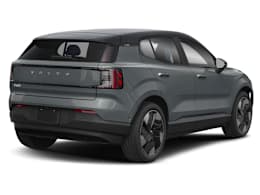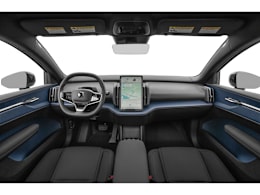Introduction
2025 Volvo EX30 EV Is Too Much, Too Little, Too Late
This pricey compact electric SUV has a ton of power and neat tricks, but its single-screen setup and tricky controls make it a pain to live withOverview
We have completed testing of the EX30. Stay tuned for the full road-test report.
We placed our order for a Volvo EX30 in January 2024, six months after we published a preview of the new vehicle in an article headlined, “All-Electric 2025 Volvo EX30 Is Priced Under $35,000.” Based on what we’d learned about the little electric hatchback, we hoped it would be a solid entry-level option and planned to evaluate it in our vehicle test program soon.
When we finally picked up our EX30 nearly 15 months later, we cut a check to our local Volvo dealer for $48,834, including fees—an amount that’s about the same as the average new car transaction price these days, but far from entry-level. Our EX30 cost thousands more than other comparable EVs, including the Chevrolet Equinox EV (which went on sale while we waited for our Volvo), Hyundai Kona Electric, Kia Niro EV, and Volkswagen ID.4.
It’s an understatement to say the EX30 had a rocky rollout in the U.S. It is based on a design that’s also used by Smart and Zeekr. Although those brands aren’t sold in the U.S., they are also owned by Geely, Volvo’s parent company. Complicating things further, the EX30 was originally supposed to be built in China. However, its debut spanned two presidential administrations that both took aim at Chinese-built EVs, and Volvo moved production to Ghent, Belgium, after building an initial run of EX30s—including ours—in Zhangjiakou, China.
Volvo aficionados who trade in an older model for an EX30 will feel like they’re visiting a favorite restaurant after a major remodel and menu change. Yes, it still has Volvo hallmarks like comfortable seats, a minimalist interior design, tons of safety features, and displays with the trademark Volvo font, but the EX30 is an entirely unique vehicle with an all-purpose, Tesla-like touchscreen instead of traditional gauges and controls, a powerful electric powertrain, a noticeably comfortable ride, and unusual interior materials. Many strangers have remarked on our EX30’s eye-catching exterior, which is painted in a fluorescent shade called Moss Yellow. If you like it, too bad—Volvo discontinued it for 2026.


























